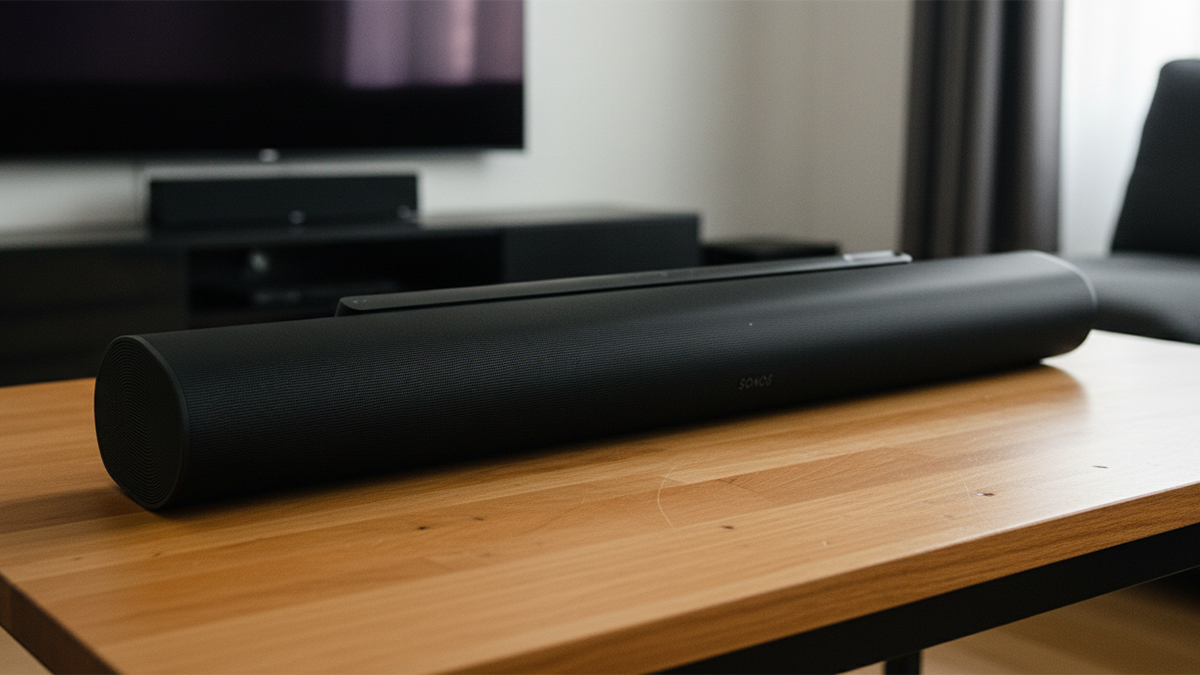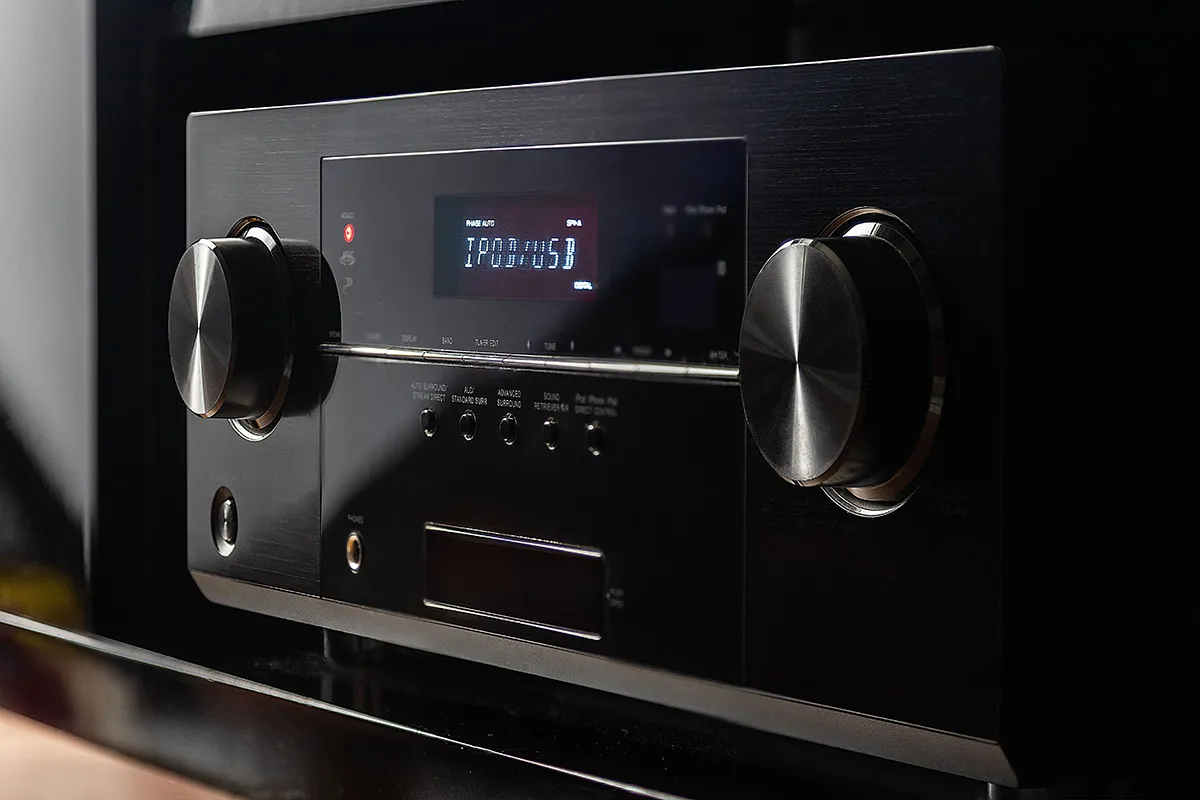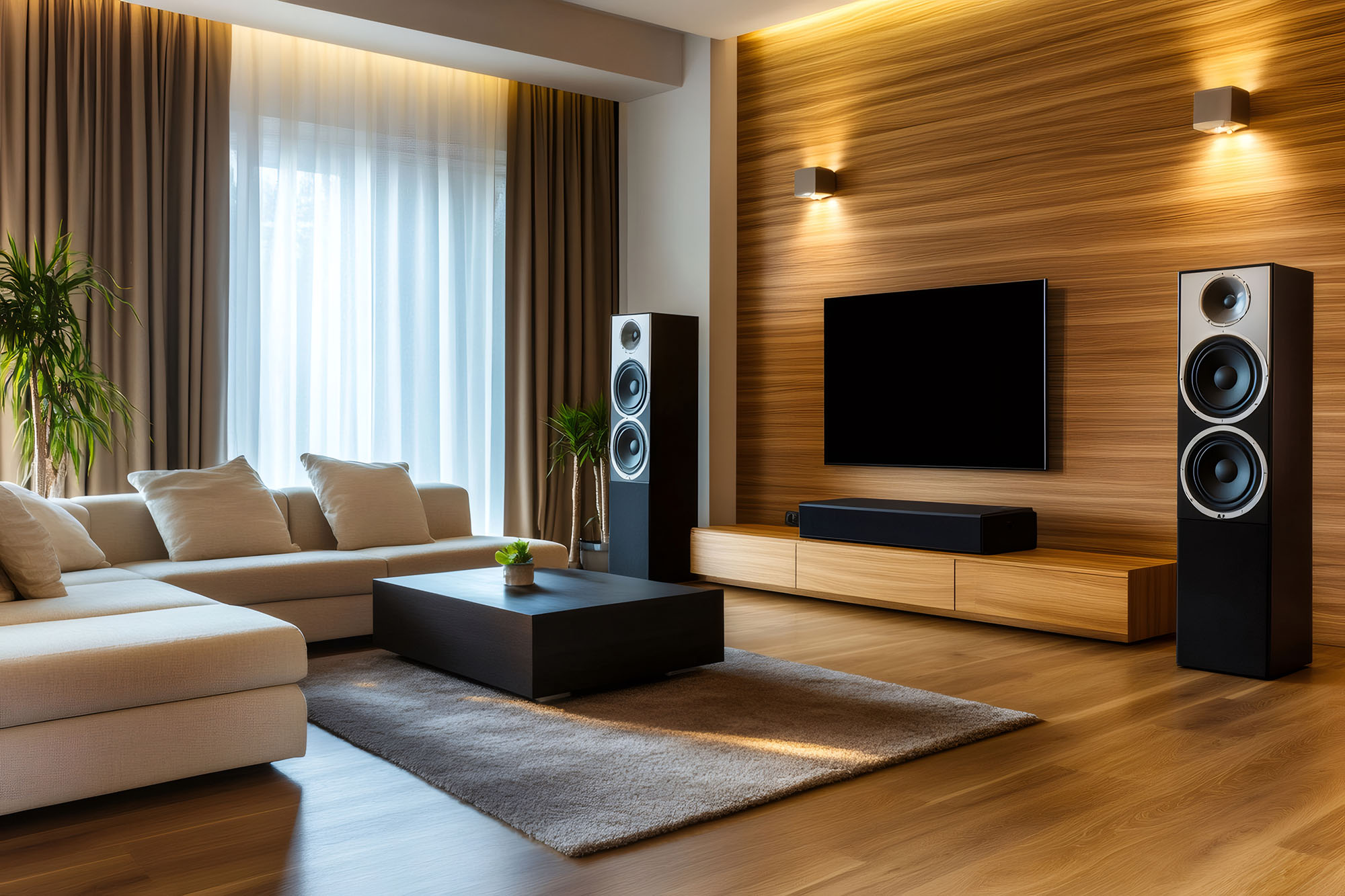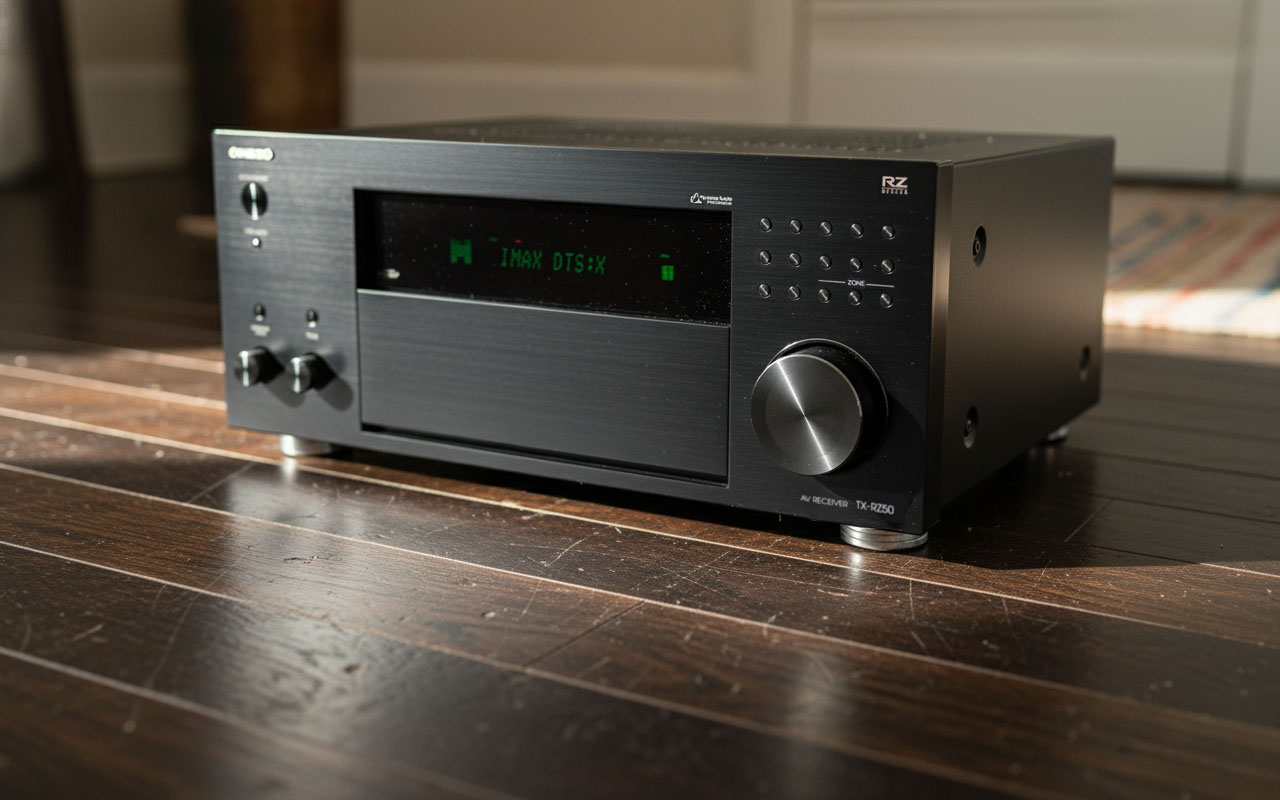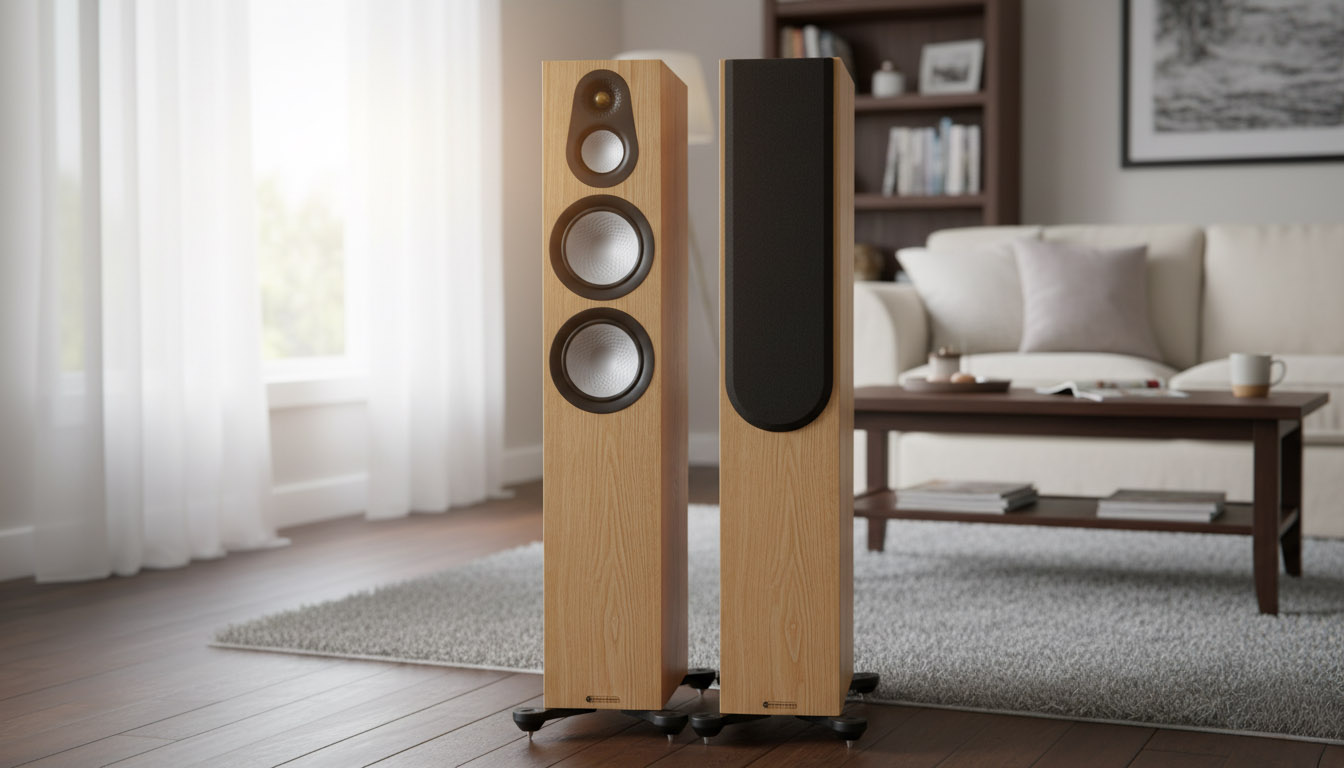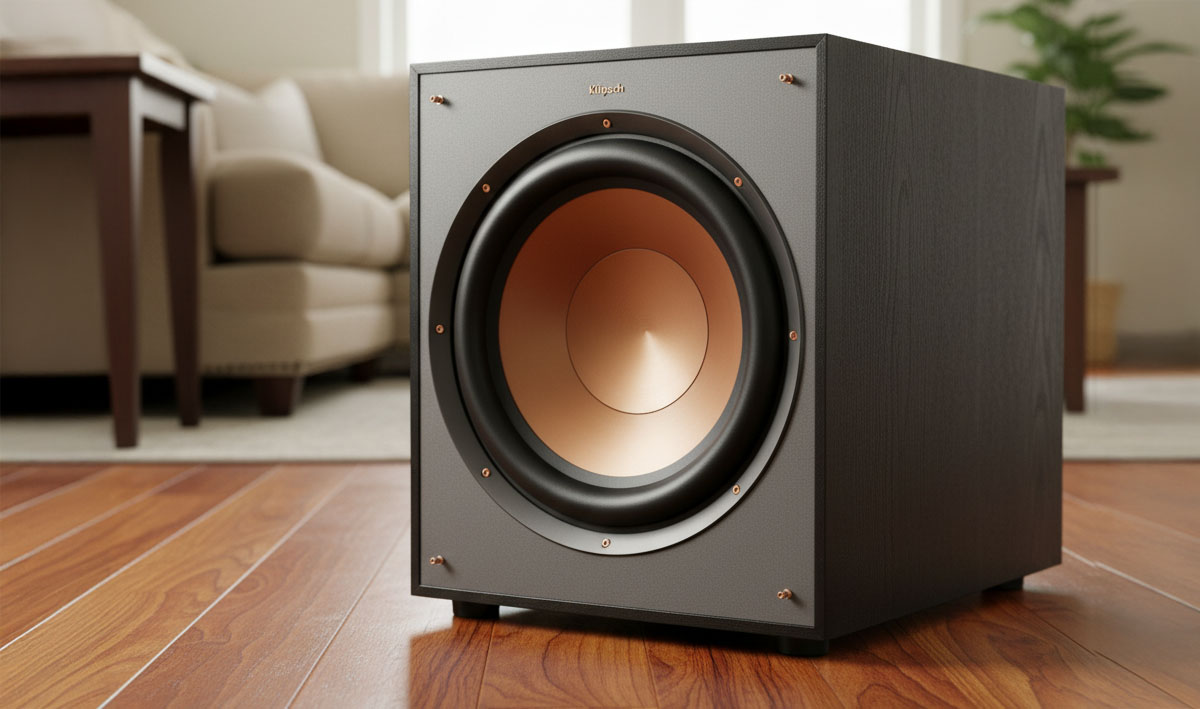Quick Take
Sonos Sub 4 adds real low-end authority to Arc Ultra, Beam, and Era-based rooms without complicating your setup. Owners praise its tight, effortless bass, one-tap wireless pairing, and the way it frees a soundbar or speakers to play cleaner and louder. Some find placement and Trueplay calibration critical, a few note that apartment-friendly listening requires restraint, and several compare its control favorably against bundled soundbar subs while admitting it won’t replace a huge, high-output theater sub. If you live in the Sonos ecosystem and want impactful, musical bass with minimal fuss, Sub 4 is the obvious upgrade.
Pros
![]() Powerful, clean bass that tightens dialogue and mids
Powerful, clean bass that tightens dialogue and mids
![]() Tool-less setup in minutes through the Sonos app
Tool-less setup in minutes through the Sonos app
![]() Force-canceling design keeps buzz and cabinet rattle at bay
Force-canceling design keeps buzz and cabinet rattle at bay
![]() Positions upright or flat; slim depth fits tight spaces (even under a sofa)
Positions upright or flat; slim depth fits tight spaces (even under a sofa)
![]() Trueplay room tuning in the Sonos app; availability varies by device
Trueplay room tuning in the Sonos app; availability varies by device
Cons
![]() Best results depend on placement and Trueplay
Best results depend on placement and Trueplay ![]() Apartment/night listening may require trimming sub level
Apartment/night listening may require trimming sub level ![]() Not compatible with non-Sonos systems
Not compatible with non-Sonos systems ![]() One sub is strong; very large rooms may prefer two
One sub is strong; very large rooms may prefer two
Introduction
The Sonos Sub 4 is a fourth-generation wireless subwoofer built to integrate seamlessly with Sonos soundbars and speakers. It preserves the distinctive rectangular cut-out design but updates the internals, wireless stability, and software hooks. The promise is simple: deliver deeper extension and higher headroom while letting your main speakers focus on mids and highs. That hand-off improves clarity across the board. Because it’s wireless and app-controlled, setup is intentionally easy, and Trueplay room tuning in the Sonos app adapts bass to the quirks of real homes (availability varies by device).
Key Features of the Sonos Sub 4
Dual 5 x 8-inch force-canceling woofers. Two inward-facing elliptical drivers move in opposition to cancel mechanical vibration. This keeps the cabinet inert so you hear the program, not the box. In daily use, that translates to punch without buzz and definition without thud.
Ported cabinet with deep extension. A tuned, ported enclosure reaches convincingly low, so movie effects land with believable weight and kick drums carry body even at moderate levels.
Dual Class-D amplification with intelligent crossover. Efficient amps are matched to the drivers and cabinet. The crossover hand-off with Sonos bars and speakers is automatic, which simplifies setup and reduces the chance of a mid-bass hump or hole.
Wireless integration and app control. Sub 4 joins your system through the Sonos app with a single tap. You can trim sub level, toggle Loudness, and fine-tune overall balance without crawling behind furniture.
Trueplay room tuning. Trueplay in the Sonos app measures your room and applies correction so bass sounds even at the main seats. Availability varies by device, but when you can run it, results are consistently better.
Flexible placement. Position upright or flat; the slim profile and decoupled driver layout help it disappear visually and sonically, even when tucked beside a console or laid flat under a sofa. Re-run Trueplay after any move.
Modern wireless hardware. A Wi-Fi 6-capable radio improves robustness in busy homes, and the updated power management trims idle consumption compared to prior generations.
Build and finish. Matte Black or Matte White options match current Sonos finishes. The enclosure feels dense and inert, supporting clean output at higher levels.

Sound Quality & Setup
Setup and the first 10 minutes. Pairing Sub 4 through the app is quick, but the magic shows up after Trueplay. Most owners describe an immediate shift: dialogue lifts, the soundbar or Era speakers stop straining, and bass lines snap into focus. It’s not just “more bass.” It’s cleaner mids because low-frequency work shifts off the bar onto a cabinet built for it. Several users who felt underwhelmed at first fixed it with one loop: move the sub 8–18 inches closer to a wall or corner, re-run Trueplay, then dial sub level down 1–3 clicks for balance. That simple routine turns flabby thump into tight, even weight without raising overall volume.
Bass character you can follow, not just feel. Feedback trends point to speed and definition. Kick drums have a clear attack and decay instead of a soft bloom, bass guitars retain pitch through runs, and electronic drops hit with impact without swallowing vocals. Compared with the small ported boxes bundled with many soundbars, listeners call out less cabinet buzz, far fewer chuffing noises on long effects, and notably lower distortion when the room gets lively. The force-canceling layout matters here: by having the two 5 x 8-inch drivers work against each other mechanically, the box stays inert, so what you hear is the content, not enclosure sympathy.
RELATED: Sonos Arc Ultra Soundbar Review
Movies vs music: different gains, same payoff. In cinema use, the headline change is headroom. With Sub 4 in the system, the soundbar hands off the heavy lifting and keeps dialogue intelligible during big set pieces. You’ll notice less vocal strain and more chest impact on hits. For music, the win is texture and timing. Tracks with walking bass, tight kick patterns, or deep sine-wave drops benefit from the sub’s control; users report they can play louder before the midrange hardens. Apartment dwellers often settle on a sub level a few clicks down and avoid hard corner-loading against a shared wall. Even at lower volumes, the system feels fuller and more relaxed.
Where it tops out, and how to push the ceiling higher. Physics still rules. Sub 4 reaches deep enough for most movie effects and modern genres, but the last fraction of infrasonics is suggested more than hammered, especially in very open plans. Two patterns show up repeatedly. First, moderate boundary gain helps: moving from a free-field placement to near-wall or near-corner can add welcome warmth between roughly 40 and 80 Hz. Re-run Trueplay and trim the sub level a notch to keep it clean. Second, dual-sub setups really do smooth the room. Two Sub 4s even out peaks and dips across a sofa and add effortless headroom, which reads as calmer and more composed rather than merely louder.
Limiter behavior and “party volume” reality. Pushed toward the top of the volume range, protection gently shapes the spectrum to keep drivers safe. Owners describe bass staying punchy while the very lowest sustain is curtailed. You’ll hear it only if you live at maximum volume. The practical sweet spot is just under “full send,” where explosions still land with weight and kick drums retain that start-stop transient without the bar sounding tense.
Trueplay matters more than you think. The most common “meh” report vanishes after a clean Trueplay run. A reliable routine from users who ended up happy: place Sub 4, play familiar tracks at normal levels, run Trueplay from two or three positions, then live with it for a day before touching sub level. If the room still feels lean, nudge the cabinet toward a boundary and re-tune. If it feels thick, pull it a foot off the wall or slide it out of the corner, then re-tune. Small moves change decay more than any app slider can.
Gen-to-gen context and Mini vs Sub 4. Owners coming from older Sonos subs often report Sub 4 sounding cleaner at the same level with extra shove on big moments. Versus Sub Mini, the difference is scale and depth: Mini blends beautifully at modest volumes and in small rooms, but Sub 4 delivers more mid-bass slam and better extension for movie night or larger spaces. That’s why many apartments end up happy with Mini, while Arc Ultra listeners in medium rooms consistently favor Sub 4.
Comparisons & Alternatives
Ecosystem reality check: Sonos Sub 4 works only with Sonos speakers and soundbars. Third-party subs don’t integrate, so if you’re staying in Sonos, your real alternatives are inside the ecosystem.
Versus no sub (Arc Ultra, Beam, Era on their own). Adding Sub 4 offloads deep bass so the bar/speakers play cleaner and louder. Dialogue firms up, midrange stress drops during big scenes, and music gains weight without turning muddy.
Versus Sonos Sub Mini. Sub Mini fits small rooms and modest volumes. It blends nicely for apartments and late-night listening. Sub 4 digs deeper, hits harder, and keeps its composure at higher levels. If you watch action or sit farther from the screen, Sub 4 is the safer bet.
Two Sub 4s in one room. Dual subs smooth out seat-to-seat bass and add effortless headroom. Great for large, open plans or multiple seating rows. The result reads as calmer and more even, not just louder.
Upgrading from older Sonos Sub (Gen 3). Moving to Sub 4 typically yields cleaner output at the same listening level, tighter mid-bass, and better control during heavy effects. If you’ve expanded to Arc Ultra or added surrounds, Sub 4’s extra composure shows up quickly.
Which pairing makes the most sense.
Era 300/100 stereo + Sub 4: richer, full-range music system that still looks clean.
Arc Ultra + Sub 4: theater-leaning setup, strong for movies and music.
Beam + Sub 4: compact footprint, big perceived step-up for living rooms.
Who Is It For?
Choose Sonos Sub 4 if you’re already in the Sonos ecosystem and want deeper, cleaner bass with the least complexity. It’s ideal for living rooms and media spaces using Arc Ultra, Beam, or Era speakers. Movie fans will feel the upgrade immediately; music-first listeners will notice better timing and separation. If your space is very large or you sit far from the screen, consider two Sub 4s. If you need plug-and-play bass at modest levels in a small apartment, Sub Mini may be sufficient.
Tips for New Owners
- Run Trueplay after placement, and again if you move furniture or add surrounds; availability varies by device.
- Start at a neutral sub level, then adjust in small steps over a few days.
- Use boundary gain wisely. Near-wall or near-corner placement adds warmth and efficiency; avoid dead center in open rooms.
- Decouple from rattly furniture. Give the port space and avoid recesses that can buzz.
- Know what Night Mode does. It trims bass for late sessions; if you want weight without waking neighbors, lower master volume and disable Night Mode.
- Consider dual subs for large rooms or multiple seats.
- Keep firmware current to benefit from wireless and DSP refinements.
Final Thoughts
The Sonos Sub 4 adds authentic low-frequency authority, preserves the clean look, and keeps daily operation effortless. It integrates in minutes, tightens the entire presentation, and scales to bigger rooms by supporting a second unit. If you want the last word in infrasonic impact for a dedicated theater, a high-output traditional sub with an AVR remains the path. For most living rooms built around a Sonos bar or speakers, Sub 4 strikes the right balance of depth, control, and simplicity.
FAQ
Will Sub 4 work with non-Sonos speakers or an AVR?
No. It’s designed to work wirelessly within the Sonos ecosystem.
Can I use two Sub 4s in one room?
Yes. Dual subs provide smoother response and added headroom.
Does orientation affect performance?
Yes. You can position it upright or flat. Re-run Trueplay after any change.
How low does it go?
It reaches down into the mid-20s Hz in-room, covering most movie effects and music fundamentals convincingly.
Do I need Sub 4 if I already have Arc Ultra?
Arc Ultra has solid mid-bass on its own. Sub 4 adds deeper extension, more impact, and frees headroom so dialogue and mids stay cleaner at loud levels.
Is Trueplay required?
Not required, but strongly recommended. Availability varies by device.
Will it bother my neighbors?
Any sub can travel through walls. Trim sub level, avoid hard corners against shared walls, and consider Night Mode for late sessions.
What finishes are available?
Matte Black and Matte White to match current Sonos gear.
Teksignal.com participates in the Amazon Services LLC Associates Program, an affiliate advertising program designed to provide a means for sites to earn advertising fees by advertising and linking to Amazon.com. The reviews on this site are hands-off consensus reviews. We analyzed owner feedback across the internet and manufacturer documentation. We summarize sentiment; we do not republish individual user posts.



